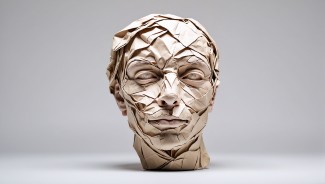Complex, elusive and subjective, consciousness is a mental faculty that is crucial to our sense of self and of the world around us. How do neuroscientists define it? How does it originate in the brain? What research is being carried out at Paris Brain Institute? We answer these questions here.
According to a dictionary definition, consciousness is the immediate intuitive or reflexive knowledge that each person has of their existence and of the world around them. There is no consensus among neuroscientists on the definition of this faculty. However, most neuroscientists agree that, when examining whether or not a person is conscious, there is one key indicator: ‘subjective relatability’. This means whether the person is able to relate to their own mental states and realize, for example, ‘I am hearing this music’, or ‘I am seeing this image’. This ability, which is not necessarily verbal, exists even in cases where someone is unable to speak. It is therefore also present in babies, people with partial or complete language loss (aphasia) and in other animal species, including chimpanzees.

For centuries, the study of consciousness was confined to the fields of philosophy, and then psychology. These fields approached consciousness from the concepts of a ‘soul’ or ‘spirit’, and often treated consciousness as an immaterial entity distinct from the body and therefore from the brain (doctrine of dualism, formalized in the 17th century by French philosopher René Descartes). Contemporary neuroscientists began to explore this phenomenon from the 1970s onwards and there was a dual ‘revolution’: the development of the cognitive sciences of consciousness (mental life viewed as information processing), and the invention of functional brain neuroimaging (EEG/MEG electrophysiology, functional MRI, PET, etc.).
Analysis of brain function in healthy people and patients with altered states of consciousness (caused by brain injury, epilepsy or surgery) revealed that consciousness is a complex phenomenon that emerges from the interaction between several very extensive brain regions. These include the frontal cortexes at the front of the brain, known to control higher-order cognitive processes like decision-making; the parietal cortexes located at the back of the dome of the skull, involved in assimilating sensory information as well as our perception of space and attention; and the central thalamus, or ‘reticular formation’, a structure between the brain and the start of the spinal cord that is involved in regulating several major vital functions (sleep-wake, walking, posture, attention, etc.).
According to the ‘global neural workspace’ theory proposed in the late 1990s by three French neuroscientists (Stanislas Dehaene, Lionel Naccache and Jean-Pierre Changeux), and accepted by most experts on consciousness, the information that comes from our senses and which is initially processed by our brain becomes conscious after entering a specific neural network known as the ‘global neural workspace’. Located at the front and back of the brain, and involving long-range extensions of neurons (or axons), this space makes sensory information available for all our mental capacities (attention, memory, etc.), allowing us to be conscious of them and incorporate them into our planned actions.
Proponents of this theory believe that being conscious requires two essential conditions: not just a state of alertness, linked to activation of the cortex by reticular formation, but also long-distance neuronal communication between the front and back of the brain. If this communication is altered by a brain injury, for example, or if it is excessive, as in certain epileptic seizures, consciousness is no longer possible. This is the case even if reticular formation is functioning.
In addition to the global neural workspace hypothesis, to date there are several other models to explain the emergence of consciousness. There is, for example, ‘integrated information theory’, proposed in 2004 by US psychiatrist Giulio Tononi. According to this theory, consciousness originates at the back of the brain, where neurons are connected in a grid-like structure. The greater the number of neurons interacting, the higher the body’s level of consciousness. The existence of so many theoretical models is a boost for empirical and theoretical scientific research.
Studying consciousness is central to the research of a team at Paris Brain Institute: the ‘PICNIC’ group. PICNIC stands for ‘Physiological Investigations of Clinically Normal and Impaired Cognition’, a group that broadly looks at the cognitive functions developed exclusively or predominantly in humans. This team explores the brain’s mechanisms of consciousness in healthy people and patients with impaired consciousness. It applies state-of-the-art behavioural and multi-modal brain imaging techniques such as high-resolution EEG, intra-cerebral EEG, and anatomical and functional MRI. The team also looks at developing tools able to assist in the diagnosis of consciousness disorders. For example, the team works to identify the brain signatures of a conscious state and of becoming conscious of sensory information (e.g. auditory or visual). We hope to learn more about this faculty and, ultimately, to understand ourselves better. However, our aim is also to improve diagnosis for patients whose consciousness has been altered. This is especially important when diagnosis (level of consciousness) and prognosis (chances of an improvement in state of consciousness) still remain very difficult in some patients.
Pour en savoir plus

Consciousness, attention, visual perception and language are complex cognitive functions involving different brain areas and neural networks.
Read more